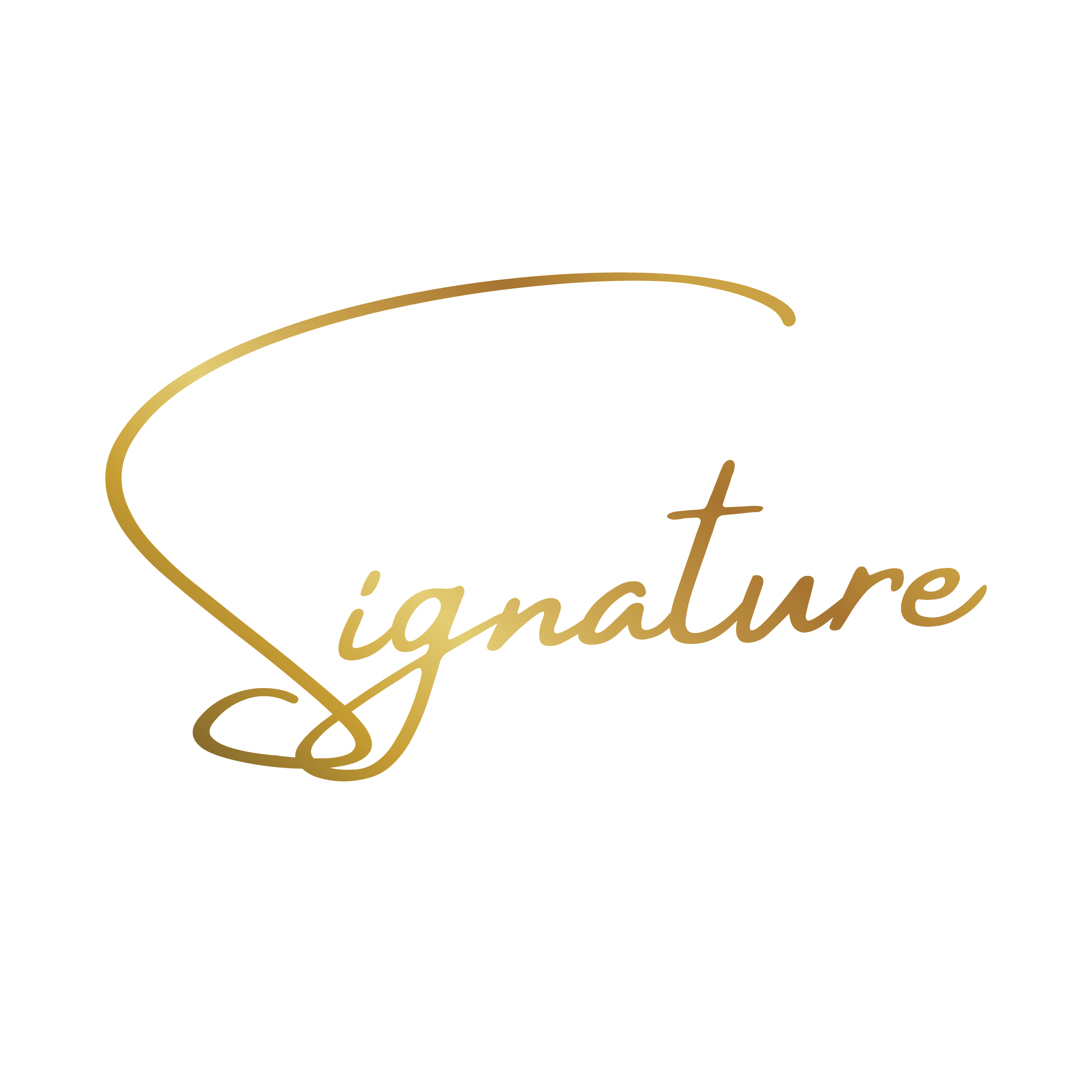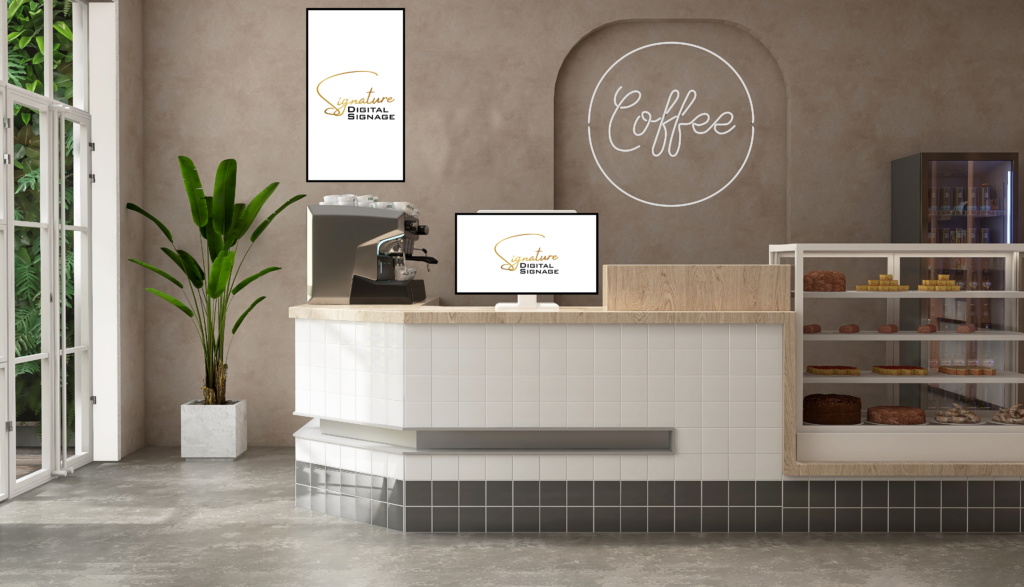Signature Digital Signage understands that installing digital menu boards can seem like a daunting process. Our aim is to make quality digital signage easy for every business, and QSR are one of the largest adopters of digital signage in Australia. It must be because it works! But how does it work and how can you leverage it to increase your customers average cost of sale and draw in new business?
How Can Menu Boards Add Value?
The most common ways to add value:
- Boosting your business’s brand awareness.
- Updating existing print signage can become a drawn out, time consuming process, deploying new content with a Digital Menu Board is uncomplicated.
Not often talked about:
The not often talked about but have a more direct effect on income:
- Increasing your existing customer’s “average cost of sale” (Or increasing the amount of money each existing customer spends in store).
- Increasing foot traffic by enticing new clients to come into your business.
Below we have outlined a few ways to build you business that are proven to work in the QSR industry:
Increasing the average cost of sale
Increasing the average cost of sale is the easiest way to capitalise on Digital Menu Boards, considering your customer is already standing in your store and is ready to spend. Often customers don’t have a set purchasing figure in mind, however, they are always looking for value. Value does not mean cheap! Different people and demographics perceive value in different ways. One buyer may see value in a Bentley because money is no option and a Bentley shows this status, others may see the value in a Toyota because they are very reliable and will last a long time.
There are a number of ways to increase the average cost of sale per customer that have been proven, this is why you see many large restaurant chains using these tactics in their marketing activities. You will likely realise you have made a purchase based on these principles in the past without realising it.
Some of these marketing tactics are as follows:
- Bundling
- Upselling
- Scheduling
- Time-of-day Pricing
- Peak Periods
- Market Testing
Bundling
Creating bundles of deals to make it easy for your customers to buy is a great way to increase the average cost of sales within your store. These are often marketed as “Value Meals” however they are more about increasing the number of dollars spent by the customer. The principle here is to bundle low-cost, high-profit items with your most popular main menu items. Some examples of low-cost, high-profit items include fries, garlic bread and/or soft drink.
Advertising these bundles on your Digital Menu Boards or at the point of sale on a digital screen is a great way to grab your client’s attention. Because Digital Menu Boards are easily edited, you can experiment with different bundles and prices to determine which combinations are most profitable
Bundling items makes customers feel as if they are getting a great deal, and you turn a $5 purchase into a $10 deal. Everyone wins!
Upselling
As implied by the name, upselling is used to convince your customer to choose the next price tier of an item on your menu.
McDonald’s is the master of upselling, and you can make your digital menu work for you by advertising these options.
Digital Menu Boards are easily updated, you can experiment with upselling different items and prices to find out what is most profitable for your business. You can even make changes on the fly with a Content Management System (CMS) to work to your advantage.
Popular Upselling Phrases:
- Would you like to supersize that for an extra $2?
- Would you like to make that a large?
- Would you like to make that a meal?
- Would you like fries with that?
Take a bakery for example, it has just hit mid afternoon and you realise that your Danish pastry sales are slower than typical for the time of day. You decide to offer a $2 Danish pastry to any customer that purchases a meat pie and drink. Providing this ‘upsell’ avoids you having to toss the extra Danish pastries at the close of business, not only have you reduced waste but also covered your cost and provided great value to your customers.
Scheduling
One of the many strengths of a Digital Menu Board with a Content Management System is the ability to schedule content and playlists to display at different times of the day. This allows you to target your audience to what items they are more likely to purchase at specific times. For example
a café might advertise a bacon and egg wrap with a coffee for $9.50 at breakfast, then promote a lunchtime deal for a ham, cheese and tomato toastie with a milkshake for $12.
Scheduling optimises menu space as it doesn’t require you to display all your different menus for breakfast, lunch, and dinner at the same time.
The Benefits of a Less Cluttered Menu?
Reduces customer confusion.
- Reduces decision-making times.
- Reduces wait times.
- Draws the customer’s attention to what you want them to purchase.
Time-of-day Pricing
Scheduling allows you to introduce time-of-day pricing. Time-of-day pricing allows your business to capitalise on peak periods within your business and/or customer buying habits and expectations.
Peak Periods
You may notice that your burger business experiences a lull in sales between 3pm and 5pm but a peak in business between 5pm and 8pm. Using the scheduler in your CMS you can schedule a $1 price rise per burger at 4pm through to 9pm to maximise profit during this busy period.
Studies of customer buying habits suggest that customers are happier to spend more money at dinner time than at lunchtime. By using the scheduler in your CMS you can schedule a lunch special for a burger, small chips and small drink for $12 and a dinner special for a burger, large chips and large drink for $17.
Market Testing
Due to the ease of use of the Content Management System you can make changes on the fly for menu items, pricing, different bundles, upselling offers, and time-of-day pricing to test what different options work for your customers.
Bringing in New Business
Bringing in new business is slightly different from increasing the average cost of sale due to the fact the customer hasn’t purchased from you before and isn’t standing in your shop ready to spend money. In this case, a Digital Promotional Board facing out of your store is an effective option. Obviously, the location of your store and the number of people passing your store will have an impact on the effectiveness of this display, so this is something to consider. High-brightness Window Displays are bright enough to view in direct sunlight, making these displays the optimal solution for street-facing stores or shopping centres with an abundance of natural light.
In these scenarios, you are targeting potential customers who may or may not be looking for your offering in particular, and that may be at a distance from your display. For these reasons, it is best to use large enticing images with little text. In the case of a burger store, you may display only a large burger and chips meal with the price to draw people in.
Use movement to your advantage and grab potential customers’ attention with eye-grabbing video or simple animation. There are a variety of different animated options to utilise, this could be food rotating, a subtle fade in, or highlighting your fresh menu items with steam drifting off food.
It is ideal to feature a couple deals, rotating through your menu offerings on a short slide show of a recommended time frame of 5 seconds per ‘deal’. This increases the chance of the image changing in the short time the customer may look at your screen and encourages the potential customer to view your displays for longer.
The Type of Digital Display Can Impact Your Customers in Several Ways:
Immediate Action
The customer is compelled by the imagery to enter your store immediately to look at what you have to offer (once inside your store your Digital Menu Boards take over the sales process)
Delayed Action
The customer is not at the point of purchase right this second (i.e. they may have just eaten) but they see the nice looking food and register it for later
Remember, once a client has chosen to purchase from your store, there is the potential that they will be a recurring customer, so it is important to ensure their experience is positive and memorable.
These marking tips are ones that I have picked up over the years of working with some of the best marketing minds from some of the largest QSR organisations in the world. Now you have access to them! Will you build your business using these tips and tricks?
Contact us to discuss the hardware and software to facilitate these marketing techniques!

